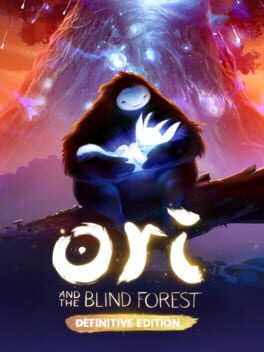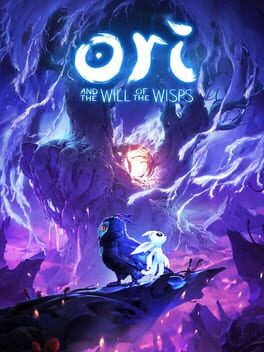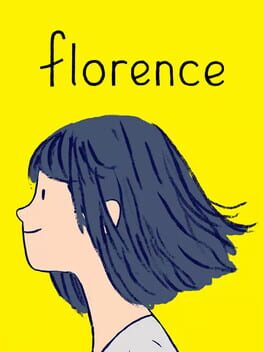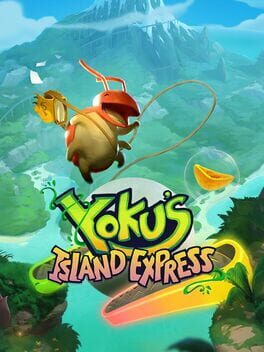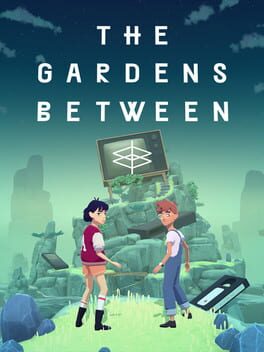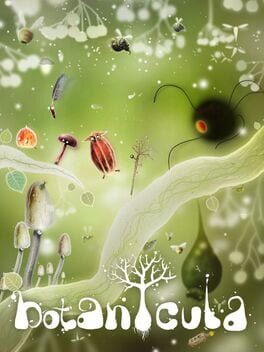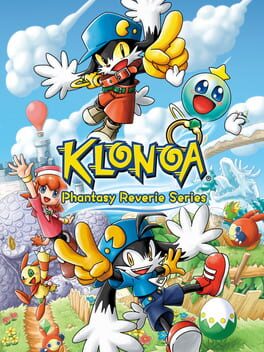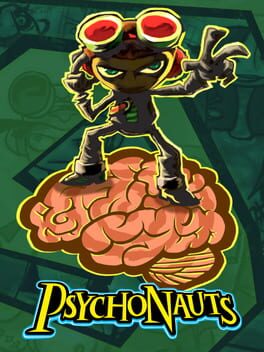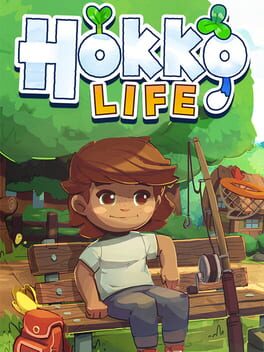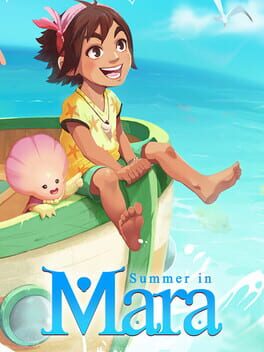TheMediaDiorama
Ori and the Blind Forest magically uplifts its gorgeous interconnected wooded world of majestic flora and hostile fauna through a viscerally melancholic narrative that elevates this sublime Metroidvania high above Nibel's leafy canopies.
WHAT I LIKED:
+ Pixar's helium-fuelled 'Up' is infamous for its emotionally affecting initial ten minutes. Well, Moon Studios attempt to match that saddening experience through its prologue of Ori's upbringing with Naru. You. Will. Cry. If no tears are shed, the eyes will undoubtedly be moist as the player unexpectedly welcomes the sorrowful tone beneath the beautiful art direction that truly powers the narrative of Ori's journey. A cataclysmic event results in the forest withering into decay, with Ori tasked in reviving the Spirit Tree by recovering the forest's light. There's death. There's destruction. But much like the Circle of Life, a concept Moon Studios was heavily influenced by, there's life. And the Blind Forest wholesomely attests to this concept through a visually stunning and emotional story that is just as important as the gameplay on offer.
+ Nibel has a life of its own. The rural world of Nibel, ranging from the serene marshlands of Thornfelt Swamp to the blustery Ghibli-inspired Valley of the Wind, has a plethora of characteristics that compliment the traditional aspects of a Metroidvania. Exploration is vital, with Ori equipped with a sprawling interconnected map that allows the player to become accustomed to the local geography as well as seek out nearby secrets. Locating Spirit Wells to regain life and energy as well as indicating fast travel points. It may seem beautifully daunting initially, but once the player explores Nibel and head out to obtain each of the three elements, the world gradually ingrains itself into the mind. It is absurdly difficult to sublimely transition between areas and still make the change look natural, however Moon Studios did that with an abundance of confidence, truly granting Nibel the life it requires.
+ Jumping between branches, diving into cold waters and moving rocks to unlock ancient doors are all traditional aspects to the Metroidvania genre. Blind Forest certainly uses the floral environment to generate challenges, both from a combat and platforming perspective, however the sole standout that differentiates this game from others within the saturated genre is the use of "Soul Links". Using Ori's energy to create, these energy-infused beams of light serve as checkpoints throughout the game. The difficulty is implemented by the low abundance of energy crystals needed to allow Ori to create these "Soul Links", therefore invoking a strategy as to where and when the player should create these checkpoints. The platforming is tough, so activating a "Soul Link" after completing a tricky area would be advisable, as the player is more than likely to accidentally jump at the wrong time and allow Ori to get impaled by a thorn...
+ Ori starts off as a fragile guardian spirit, but will soon evolve into a speedy, combative, free-running beast through the use of an ability tree system. Slaying enemies, destroying certain flora and locating those valuable spirit containers will grant Ori the opportunity to gain new skills based on three distinct categories. Every single skill is deemed useful, either for traversal or combat enhancements, inciting the player to choose wisely before venturing further into the dangers that Nibel succinctly hides away.
+ Nibel is brought to life through an ornate art direction that can only be surmised in one word: Beguiling. There's no other way to describe Blind Forest. The creative team at Moon Studios have produced one of the most gorgeous gaming experiences ever, often surpassing the vast majority of AAA titles. From the 3D animated character models populating the vibrant water-coloured backdrops to the softly epic score that is teeming with life. There is not a single line, colour or detail out of place!
+ Ori's journey to save Nibel is a short quest. Fortunately it never outstays it welcome, with a plethora of collectibles to be found and an array of difficulties added in the Definitive Edition which all increase the replay value. The "One Life" difficulty is, to be bluntly, absurd mostly due to the only complaint that could be found...
WHAT I DISLIKED:
- ...the escape sequences. Ori never really faces off against a boss, mostly due to the focus on precise platforming rather than aggressive combat. Instead, after each element is obtained, Ori must flee from a threat that seeks to end him. This could be rapidly rising waters with the player tasked in ascending a tower before Ori drowns, or a ferocious owl swooping in every five seconds. These sequences generate an artificial difficulty that pushes Ori's newfound abilities to generate tension and pressure, more so than having the player moving around normally. The problem is with the absurd "trial and error" approach and the lack of checkpoints that ultimately incites repetition in order for the player to learn the traps and obstacles before moving on. Repetition is the antithesis of fun. Whilst the tension is ramped up, the change in pace is not welcomed and provokes several unnecessary rage-inducing moments in what is otherwise a near-perfect game.
VERDICT:
8/10 ancestral trees
WHAT I LIKED:
+ Pixar's helium-fuelled 'Up' is infamous for its emotionally affecting initial ten minutes. Well, Moon Studios attempt to match that saddening experience through its prologue of Ori's upbringing with Naru. You. Will. Cry. If no tears are shed, the eyes will undoubtedly be moist as the player unexpectedly welcomes the sorrowful tone beneath the beautiful art direction that truly powers the narrative of Ori's journey. A cataclysmic event results in the forest withering into decay, with Ori tasked in reviving the Spirit Tree by recovering the forest's light. There's death. There's destruction. But much like the Circle of Life, a concept Moon Studios was heavily influenced by, there's life. And the Blind Forest wholesomely attests to this concept through a visually stunning and emotional story that is just as important as the gameplay on offer.
+ Nibel has a life of its own. The rural world of Nibel, ranging from the serene marshlands of Thornfelt Swamp to the blustery Ghibli-inspired Valley of the Wind, has a plethora of characteristics that compliment the traditional aspects of a Metroidvania. Exploration is vital, with Ori equipped with a sprawling interconnected map that allows the player to become accustomed to the local geography as well as seek out nearby secrets. Locating Spirit Wells to regain life and energy as well as indicating fast travel points. It may seem beautifully daunting initially, but once the player explores Nibel and head out to obtain each of the three elements, the world gradually ingrains itself into the mind. It is absurdly difficult to sublimely transition between areas and still make the change look natural, however Moon Studios did that with an abundance of confidence, truly granting Nibel the life it requires.
+ Jumping between branches, diving into cold waters and moving rocks to unlock ancient doors are all traditional aspects to the Metroidvania genre. Blind Forest certainly uses the floral environment to generate challenges, both from a combat and platforming perspective, however the sole standout that differentiates this game from others within the saturated genre is the use of "Soul Links". Using Ori's energy to create, these energy-infused beams of light serve as checkpoints throughout the game. The difficulty is implemented by the low abundance of energy crystals needed to allow Ori to create these "Soul Links", therefore invoking a strategy as to where and when the player should create these checkpoints. The platforming is tough, so activating a "Soul Link" after completing a tricky area would be advisable, as the player is more than likely to accidentally jump at the wrong time and allow Ori to get impaled by a thorn...
+ Ori starts off as a fragile guardian spirit, but will soon evolve into a speedy, combative, free-running beast through the use of an ability tree system. Slaying enemies, destroying certain flora and locating those valuable spirit containers will grant Ori the opportunity to gain new skills based on three distinct categories. Every single skill is deemed useful, either for traversal or combat enhancements, inciting the player to choose wisely before venturing further into the dangers that Nibel succinctly hides away.
+ Nibel is brought to life through an ornate art direction that can only be surmised in one word: Beguiling. There's no other way to describe Blind Forest. The creative team at Moon Studios have produced one of the most gorgeous gaming experiences ever, often surpassing the vast majority of AAA titles. From the 3D animated character models populating the vibrant water-coloured backdrops to the softly epic score that is teeming with life. There is not a single line, colour or detail out of place!
+ Ori's journey to save Nibel is a short quest. Fortunately it never outstays it welcome, with a plethora of collectibles to be found and an array of difficulties added in the Definitive Edition which all increase the replay value. The "One Life" difficulty is, to be bluntly, absurd mostly due to the only complaint that could be found...
WHAT I DISLIKED:
- ...the escape sequences. Ori never really faces off against a boss, mostly due to the focus on precise platforming rather than aggressive combat. Instead, after each element is obtained, Ori must flee from a threat that seeks to end him. This could be rapidly rising waters with the player tasked in ascending a tower before Ori drowns, or a ferocious owl swooping in every five seconds. These sequences generate an artificial difficulty that pushes Ori's newfound abilities to generate tension and pressure, more so than having the player moving around normally. The problem is with the absurd "trial and error" approach and the lack of checkpoints that ultimately incites repetition in order for the player to learn the traps and obstacles before moving on. Repetition is the antithesis of fun. Whilst the tension is ramped up, the change in pace is not welcomed and provokes several unnecessary rage-inducing moments in what is otherwise a near-perfect game.
VERDICT:
8/10 ancestral trees
Ori and the Will of the Wisps whimsically consumes the forestry strands of its predecessor and grows a new majestic world that manages to improve on every aspect that made its antecedent an acclaimed piece of art.
WHAT I LIKED:
+ Light versus dark. Life versus death. Growth versus decay. Moon Studios wrote a renowned tale of natural melancholy when creating Blind Forest that made players break down in tears within the first ten minutes. Obviously, this thematic presence would continue into its sequel, and it is relentless. Whilst the glimmer of hope shines throughout Ori's second quest into saving a new forest, with the assistance of Kuro's last baby owl Ku, it is not a happy tale. Not. At. All. But that's the beauty of Will of the Wisp's narrative. It never sugarcoats the natural order of life. It flourishes when it is at its most heartless, but consistently makes an impression upon the player. When those final ten minutes play, your heart will either be empty or flooded with salty tears. Masterful direction!
+ Corruption and decay has withered the forest. Much like Nibel, Niwen centralises itself around a colossal tree, this time a willow. However a core concept within this sequel's art design is the alteration the growing decay makes on Niwen's luscious areas. The polluted waters of The Wellspring. The eternal darkness of Mouldwood Depths. The degradation of Silent Woods. Ori, being tasked in finding all five wisps to reignite the willow's spirit light, can restore Niwen to its former flourishing state once obtaining each of the wisps. For example granting Mouldwood Depths an abundance of light once more. These small details grant Niwen a brand new life of its own as the journey progresses. Yes, the art direction is just as masterful as Blind Forest. And yes, it is one of the most gorgeous experiences to be had. But these changes in geography and natural state enhance the Metroidvania style that Moon Studios have lovingly embraced. Niwen truly felt interconnected.
+ Slash through the tainted wildlife. Unlike Blind Forest which predominantly focused on precision platforming over combat, Will of the Wisp progresses the base gameplay mechanics even further by fairly balancing the two styles. Ori is equipped with an array of abilities, with three being assigned at any one time, that grant him new combat and traversal powers. Launching speared projectiles at enemies. Smashing the ground and pulverising the indigenous fauna. Each of these abilities can be upgraded and can be switched out at any time. This grants the player further strategy when encountering a combat shrine and/or a tricky path of traps.
+ Hollow Knight makes an impression once again. "Soul Links" and the previous sequential upgrade system have been abandoned, with Moon Studios adopting the charm system that Team Cherry's masterpiece Hollow Knight had strategically employed. Ori can now attach several shards to him that gift him with several bonuses and curses, such as increase in defence or triple jumping. The gimmick here is that Ori can only have a a certain number of shards attached to him at any time, therefore the player must strategically grant Ori the appropriate shards for the appropriate situation. Several shards, and the total capacity, can be upgraded to further Ori's skills when encountering the dangers of Niwen.
+ The beasts of Niwen will strike Ori down. The trial and error escape sequences that Blind Forest haphazardly introduced have been dialled back somewhat in this sequel. Sure, they do exist, but they are far more forgiving. Instead, thanks to the focus on combat, boss battles make an appearance. And boy oh boy are they tough! A colossal arachnid lurking in the darkness. A corrupted giant toad. An enormous sandworm. There's plenty of beasty boys to test the player's combat initiatives, and they all have multiple phases to them.
+ Fear not though, as there are plenty of collectibles scattered throughout Niwen that can assist in besting those beasts. From energy and life cells to hidden shards, every collectible is necessary to make Ori as strong as possible. Another new addition to Will of the Wisp's is a central village that hosts all of the different vendors needed to upgrade Ori's abilities. Gorlek Ores are also secretly positioned throughout Niwen and are used to help rebuild the glades. There's also an abundance of sidequests that will reward Ori handsomely. So if you ever find yourself stuck against a boss battle, there's plenty the needs to be done and explored in the forest of Niwen.
+ A symphony of art. Composer Gareth Coker certainly made an impression with Blind Forest's composition, but he outdid himself with this game's soundtrack. It is unequivocally beautiful. Every single facet of Niwen's sprawling landscapes were accompanied by a score that supplied even more life to the artistic visuals. From the gentle violin strings of Mouldwood Depths to the grandiose tapestry found in Willow's End. This soundtrack needs everyone's attention!
+ Will of the Wisp is bigger, better and braver with its storytelling, world-building and integral gameplay. Everything a sequel should do!
WHAT I DISLIKED:
- As seen on the poster and the vastly detailed promotional material, Ori is accompanied by an friendly owl named Ku. From the introductory prologue and a segment in the Silent Woods, the player can control both Ori and Ku together as they traverse the desolate intricacies of this newly discovered forest. Ku can glide, flap her wings on the ground and has an increased walking speed. The only issue is, after a not-so minor plot detail unveils itself, this partnership ceases to exist and the player can no longer control both Ori and Ku. Considering the possibilities of new traversal mechanics, this felt like a wasted opportunity to add some more flavour to Ori's traditional gameplay style. Had Moon Studios extended the Silent Woods segment, and/or chose to include Ku in more of Ori's initial journey before their separation, Will of the Wisp's may have been the perfect varied Metroidvania title.
VERDICT:
9/10 Gorlek Ores
WHAT I LIKED:
+ Light versus dark. Life versus death. Growth versus decay. Moon Studios wrote a renowned tale of natural melancholy when creating Blind Forest that made players break down in tears within the first ten minutes. Obviously, this thematic presence would continue into its sequel, and it is relentless. Whilst the glimmer of hope shines throughout Ori's second quest into saving a new forest, with the assistance of Kuro's last baby owl Ku, it is not a happy tale. Not. At. All. But that's the beauty of Will of the Wisp's narrative. It never sugarcoats the natural order of life. It flourishes when it is at its most heartless, but consistently makes an impression upon the player. When those final ten minutes play, your heart will either be empty or flooded with salty tears. Masterful direction!
+ Corruption and decay has withered the forest. Much like Nibel, Niwen centralises itself around a colossal tree, this time a willow. However a core concept within this sequel's art design is the alteration the growing decay makes on Niwen's luscious areas. The polluted waters of The Wellspring. The eternal darkness of Mouldwood Depths. The degradation of Silent Woods. Ori, being tasked in finding all five wisps to reignite the willow's spirit light, can restore Niwen to its former flourishing state once obtaining each of the wisps. For example granting Mouldwood Depths an abundance of light once more. These small details grant Niwen a brand new life of its own as the journey progresses. Yes, the art direction is just as masterful as Blind Forest. And yes, it is one of the most gorgeous experiences to be had. But these changes in geography and natural state enhance the Metroidvania style that Moon Studios have lovingly embraced. Niwen truly felt interconnected.
+ Slash through the tainted wildlife. Unlike Blind Forest which predominantly focused on precision platforming over combat, Will of the Wisp progresses the base gameplay mechanics even further by fairly balancing the two styles. Ori is equipped with an array of abilities, with three being assigned at any one time, that grant him new combat and traversal powers. Launching speared projectiles at enemies. Smashing the ground and pulverising the indigenous fauna. Each of these abilities can be upgraded and can be switched out at any time. This grants the player further strategy when encountering a combat shrine and/or a tricky path of traps.
+ Hollow Knight makes an impression once again. "Soul Links" and the previous sequential upgrade system have been abandoned, with Moon Studios adopting the charm system that Team Cherry's masterpiece Hollow Knight had strategically employed. Ori can now attach several shards to him that gift him with several bonuses and curses, such as increase in defence or triple jumping. The gimmick here is that Ori can only have a a certain number of shards attached to him at any time, therefore the player must strategically grant Ori the appropriate shards for the appropriate situation. Several shards, and the total capacity, can be upgraded to further Ori's skills when encountering the dangers of Niwen.
+ The beasts of Niwen will strike Ori down. The trial and error escape sequences that Blind Forest haphazardly introduced have been dialled back somewhat in this sequel. Sure, they do exist, but they are far more forgiving. Instead, thanks to the focus on combat, boss battles make an appearance. And boy oh boy are they tough! A colossal arachnid lurking in the darkness. A corrupted giant toad. An enormous sandworm. There's plenty of beasty boys to test the player's combat initiatives, and they all have multiple phases to them.
+ Fear not though, as there are plenty of collectibles scattered throughout Niwen that can assist in besting those beasts. From energy and life cells to hidden shards, every collectible is necessary to make Ori as strong as possible. Another new addition to Will of the Wisp's is a central village that hosts all of the different vendors needed to upgrade Ori's abilities. Gorlek Ores are also secretly positioned throughout Niwen and are used to help rebuild the glades. There's also an abundance of sidequests that will reward Ori handsomely. So if you ever find yourself stuck against a boss battle, there's plenty the needs to be done and explored in the forest of Niwen.
+ A symphony of art. Composer Gareth Coker certainly made an impression with Blind Forest's composition, but he outdid himself with this game's soundtrack. It is unequivocally beautiful. Every single facet of Niwen's sprawling landscapes were accompanied by a score that supplied even more life to the artistic visuals. From the gentle violin strings of Mouldwood Depths to the grandiose tapestry found in Willow's End. This soundtrack needs everyone's attention!
+ Will of the Wisp is bigger, better and braver with its storytelling, world-building and integral gameplay. Everything a sequel should do!
WHAT I DISLIKED:
- As seen on the poster and the vastly detailed promotional material, Ori is accompanied by an friendly owl named Ku. From the introductory prologue and a segment in the Silent Woods, the player can control both Ori and Ku together as they traverse the desolate intricacies of this newly discovered forest. Ku can glide, flap her wings on the ground and has an increased walking speed. The only issue is, after a not-so minor plot detail unveils itself, this partnership ceases to exist and the player can no longer control both Ori and Ku. Considering the possibilities of new traversal mechanics, this felt like a wasted opportunity to add some more flavour to Ori's traditional gameplay style. Had Moon Studios extended the Silent Woods segment, and/or chose to include Ku in more of Ori's initial journey before their separation, Will of the Wisp's may have been the perfect varied Metroidvania title.
VERDICT:
9/10 Gorlek Ores
2018
Florence beautifully depicts the turbulence of love and the struggles of combating the mundane daily routines of life through a gorgeously illustrated, albeit minuscule, interactive story.
WHAT I LIKED:
+ Florence Yeoh, a 25-year-old woman, has conformed to the monotony of routine-based life. Wake up, brush teeth, eat breakfast, catch up on social media, work at a job she lacks passion for, come home, go to sleep and repeat the cyclical nature of life forever. This depiction of mindless life, that the vast majority of societal members naturally abide by, is excruciatingly realistic and ever so relatable (especially for blue and white collared workers) and makes Florence empathetic. She then meets a cellist, Krish, who befriends her before a turbulent relationship sends her aspirational trajectory through a different direction. As a story, Florence shines as a silent linear experience purely focusing on its approachable narrative that makes an impression without having to employ violence. Plus, it's incredibly motivational! Capturing the essence of what it is like to fall in love and the joy of pursuing a hobby. Isn't that what life is about?
+ Life reinforcement through minigames. Being an interactive story, Florence slides away from the typical "web comic" and offers an array of interaction that assist in bonding closer with Florence and her life. From tediously playing a game of "Pairs" when working at the accountancy firm to conjoining speech bubbles when conversing with Krish. Very simple and understated minigames, but undoubtedly produce a sophisticated level of interaction for the player. Plus, it's the only story where you can repeatedly decline several calls from a mother, yet she still persists with ringing...
+ Life animated. Florence really is a work of art. The gorgeous illustrations of Florence, Krish and the memories they share together truly offer a premium storytelling method. The transitions between slides and/or chapters were sublime. The details within the animation and player interactivity were succinctly embedded. And the constant use of movement displays to indicate how the player should interact with the story, such as scrolling, makes Florence accessible for everyone.
WHAT I DISLIKED:
- Art trumps love. Not so much a negative, but more a criticism with Florence's conclusion. There is an obtuse amount of narcissism that doesn't sit well with me personally. When the majority of Florence's story settles for "first love" and the multitude of memories that she shares with Krish, to sharply open her future up after a certain event occurs seemed self-conceited and supplies a pessimistic perspective on what "love" controls. An argument for this ending could be that Krish's passion for music and the arts has now made an impression on Florence, something she would never have discovered without him. However the brief exploration into this does not warrant the self-adulation that regrettably possessed the conclusion.
- One's love life is incredibly short. Being an interactive story split into chapters, Florence is somewhat on the short side. It never outstays its welcome mind you, but further exploration into Florence's childhood and her memories with Krish could've enhanced her characterisation, and the game's length, that little bit more.
VERDICT:
7/10 <3 emojis
WHAT I LIKED:
+ Florence Yeoh, a 25-year-old woman, has conformed to the monotony of routine-based life. Wake up, brush teeth, eat breakfast, catch up on social media, work at a job she lacks passion for, come home, go to sleep and repeat the cyclical nature of life forever. This depiction of mindless life, that the vast majority of societal members naturally abide by, is excruciatingly realistic and ever so relatable (especially for blue and white collared workers) and makes Florence empathetic. She then meets a cellist, Krish, who befriends her before a turbulent relationship sends her aspirational trajectory through a different direction. As a story, Florence shines as a silent linear experience purely focusing on its approachable narrative that makes an impression without having to employ violence. Plus, it's incredibly motivational! Capturing the essence of what it is like to fall in love and the joy of pursuing a hobby. Isn't that what life is about?
+ Life reinforcement through minigames. Being an interactive story, Florence slides away from the typical "web comic" and offers an array of interaction that assist in bonding closer with Florence and her life. From tediously playing a game of "Pairs" when working at the accountancy firm to conjoining speech bubbles when conversing with Krish. Very simple and understated minigames, but undoubtedly produce a sophisticated level of interaction for the player. Plus, it's the only story where you can repeatedly decline several calls from a mother, yet she still persists with ringing...
+ Life animated. Florence really is a work of art. The gorgeous illustrations of Florence, Krish and the memories they share together truly offer a premium storytelling method. The transitions between slides and/or chapters were sublime. The details within the animation and player interactivity were succinctly embedded. And the constant use of movement displays to indicate how the player should interact with the story, such as scrolling, makes Florence accessible for everyone.
WHAT I DISLIKED:
- Art trumps love. Not so much a negative, but more a criticism with Florence's conclusion. There is an obtuse amount of narcissism that doesn't sit well with me personally. When the majority of Florence's story settles for "first love" and the multitude of memories that she shares with Krish, to sharply open her future up after a certain event occurs seemed self-conceited and supplies a pessimistic perspective on what "love" controls. An argument for this ending could be that Krish's passion for music and the arts has now made an impression on Florence, something she would never have discovered without him. However the brief exploration into this does not warrant the self-adulation that regrettably possessed the conclusion.
- One's love life is incredibly short. Being an interactive story split into chapters, Florence is somewhat on the short side. It never outstays its welcome mind you, but further exploration into Florence's childhood and her memories with Krish could've enhanced her characterisation, and the game's length, that little bit more.
VERDICT:
7/10 <3 emojis
Yoku's Island Express ingeniously flips its pinball arcade roots to organically conceive an innovative Metroidvania that, whilst is absent of consequential challenges, delivers the necessary goods with assured confidence and composure.
WHAT I LIKED:
+ The postman always rings twice. Yoku, a dung beetle permanently attached to a ball comprising of all sorts of stuff, becomes a postmaster on a thriving island and must deliver letters to certain characters in order to prevent a looming calamity from occurring. The playing controls Yoku, which in turn moves the ball around the island. No jumping. No sprinting. The majority of traversal is managed by manipulating pinball paddles to guide Yoku's ball, and consequently Yoku himself, through ramps, bumpers and a plethora of tracks within the substantially luscious open-world location. It's an incredibly unique blend of two genres, and one that works effortlessly in supplying fun without resorting to excess perseverance.
+ Mokumana in all its stunning glory. The island to which Island Express is set in is varied and interconnected, as all good Metroidvanias should be, and is filled with an abundance of collectible Wickerlings and upgrades to specific equipment. However, its beauty comes from the picturesque water-coloured backdrops that give life to the island. From the snowy tundra mountains of Ivory Peaks to the thick dense foliage of Gorilla Woods. The best of the genre produce an organic free-flowing world, and Mokumana sits among the best by designing its world around the pinball mechanics without making them look disarranged.
+ Please insert coin. Yoku is bounced, flipped and tossed around like a raw patty on a smoky barbecue. The incorporation of pinball mechanics in a two-dimensional side-scrolling platformer should not work. But, here we are, and it does so magnificently. These interspersed segments test the player's classic arcade skills whilst also embedding the various special abilities that Yoku comes across as he searches the island high and low for mailboxes. For example, vacuuming up slugs which can then be used to explode Yoku's clump of stringiness and change his trajectory, or to obliterate boulders. Several optional scarabs also add further challenges by enabling the player to complete certain manoeuvres within the pinball areas, maximising this mechanic's potential even further. Flip those flippers!
+ The postmaster really is a fungi. Dispersing various mushrooms across the island to find suitable habitable conditions, recovering ancient fragments of a statue, juicing up the juicery and loads more! Island Express is open-world, and therefore a plethora of side-quests are available which will reward Yoku with some incredibly useful items. Diving underwater being one of them...
+ Squish that spider! The main story somehow involves boss battles where Yoku must fully pelt the ball into the bosses' weak points. Whether it be a giant spider, igniting a space rocket (we'll count that...) or a flying...indescribable creature with claws and substantial grimacing? Either way, they are cleverly merged with the pinball mechanics, newly introduced abilities and pack a wholesome amount of charm.
WHAT I DISLIKED:
- Who knew being a dung beetle being employed as a postmaster would be so breezy? Yoku's Island Express is definitely aimed for the casual audience, lacking in any real challenge. Failing to flip Yoku's ball will result in loss of fruit, the basic currency of the game, and an instant restart in the same area. The abundance of fruit consequently relinquishes any fear of loss. Missed activating a flipper? Boom! Here's another chance, and another...and another. The only real challenge is learning the geography of Mokumana, however thanks to the detailed in-game map and unlockable bee-lines (essentially fast travel points) this is made easier. It's not a major critique, as many will seek to have a relaxing yet fun time with Island Express, but those searching for real challenge are unlikely to find it here.
VERDICT:
8/10 wallet upgrades
WHAT I LIKED:
+ The postman always rings twice. Yoku, a dung beetle permanently attached to a ball comprising of all sorts of stuff, becomes a postmaster on a thriving island and must deliver letters to certain characters in order to prevent a looming calamity from occurring. The playing controls Yoku, which in turn moves the ball around the island. No jumping. No sprinting. The majority of traversal is managed by manipulating pinball paddles to guide Yoku's ball, and consequently Yoku himself, through ramps, bumpers and a plethora of tracks within the substantially luscious open-world location. It's an incredibly unique blend of two genres, and one that works effortlessly in supplying fun without resorting to excess perseverance.
+ Mokumana in all its stunning glory. The island to which Island Express is set in is varied and interconnected, as all good Metroidvanias should be, and is filled with an abundance of collectible Wickerlings and upgrades to specific equipment. However, its beauty comes from the picturesque water-coloured backdrops that give life to the island. From the snowy tundra mountains of Ivory Peaks to the thick dense foliage of Gorilla Woods. The best of the genre produce an organic free-flowing world, and Mokumana sits among the best by designing its world around the pinball mechanics without making them look disarranged.
+ Please insert coin. Yoku is bounced, flipped and tossed around like a raw patty on a smoky barbecue. The incorporation of pinball mechanics in a two-dimensional side-scrolling platformer should not work. But, here we are, and it does so magnificently. These interspersed segments test the player's classic arcade skills whilst also embedding the various special abilities that Yoku comes across as he searches the island high and low for mailboxes. For example, vacuuming up slugs which can then be used to explode Yoku's clump of stringiness and change his trajectory, or to obliterate boulders. Several optional scarabs also add further challenges by enabling the player to complete certain manoeuvres within the pinball areas, maximising this mechanic's potential even further. Flip those flippers!
+ The postmaster really is a fungi. Dispersing various mushrooms across the island to find suitable habitable conditions, recovering ancient fragments of a statue, juicing up the juicery and loads more! Island Express is open-world, and therefore a plethora of side-quests are available which will reward Yoku with some incredibly useful items. Diving underwater being one of them...
+ Squish that spider! The main story somehow involves boss battles where Yoku must fully pelt the ball into the bosses' weak points. Whether it be a giant spider, igniting a space rocket (we'll count that...) or a flying...indescribable creature with claws and substantial grimacing? Either way, they are cleverly merged with the pinball mechanics, newly introduced abilities and pack a wholesome amount of charm.
WHAT I DISLIKED:
- Who knew being a dung beetle being employed as a postmaster would be so breezy? Yoku's Island Express is definitely aimed for the casual audience, lacking in any real challenge. Failing to flip Yoku's ball will result in loss of fruit, the basic currency of the game, and an instant restart in the same area. The abundance of fruit consequently relinquishes any fear of loss. Missed activating a flipper? Boom! Here's another chance, and another...and another. The only real challenge is learning the geography of Mokumana, however thanks to the detailed in-game map and unlockable bee-lines (essentially fast travel points) this is made easier. It's not a major critique, as many will seek to have a relaxing yet fun time with Island Express, but those searching for real challenge are unlikely to find it here.
VERDICT:
8/10 wallet upgrades
Hellblade: Senua's Sacrifice intensifies the abnormalities surrounding psychosis through a visceral journey into the hellish underworld of Norse mythology, bravely blending a neurological deficiency with a dark fantastical hack-and-slash interactive experience.
WHAT I LIKED:
+ "The hardest battles are fought in the mind". Psychosis is the mental condition resulting in difficulties when determining what is reality and what is fantasy, such as suffering with delusions and hallucinations. Senua, a Celtic warrior, strives to travel to Helheim to rescue the soul of her dead lover from the Norse goddess of death Hela. Throughout her perilous journey, she becomes afflicted with a curse which conjures otherworldly enemies for Senua to combat and haunts her mind with the voices of darkness. Upon failure, the curse overwhelms her body and rots her flesh until she is no more. Ninja Theory's writer Antoniades, along with several neuroscientists and mental health specialists, sublimely supply a metaphor throughout Senua's Sacrifice that uniquely approaches the condition without forcing Senua to be a conduit for the condition. Through the use of backstory and heightened memories, Senua instantly becomes a fleshed out character without embodying the mental condition as a gimmick. She is not defined by the condition, rather the player experiences the turmoil with her. Subconsciously internalising the world to which she perceives it. It is, without a doubt, a masterful representation of a tricky mental condition to convey through art. To conceive a compelling narrative, build a melancholic world and raise awareness on psychosis, is nothing short of genius.
+ "A life without loss is one without love". Senua, captured in full motion capture by the talented Melina Juergens, is a performance to be reckoned with. The ferocity through the psychological horror. The tenacity through her unwavering determination. The fury buried deep with her, as she unleashes her anger out upon the world. It is breathtakingly intense. From the glares into the player's soul, to the vehement screams as she crumbles to the ground. For the entirety of her quest, Senua along with player will struggle to breathe. The inclusion of live action performances, reflecting her memories, and integral voice acting narration which act as verbal indications for the player, are purposefully designed to fit around Senua's condition. And it works, effortlessly.
+ "You destroyed everything! Everyone! But not me! Fight me now!". Blending a variety of genres, the core game mechanic ultimately relies on its hack-and-slash roots. Senua is provided with limited moves, such as a light/heavy attack and blocking capabilities. However the beauty of Senua's combat, despite its limitations, is how tight the controls are. Every slash of her sword and every dodge from oncoming enemy attacks felt instantly responsive, with a satisfying weight to them. The narrative is the key focus, therefore the combat's complexities are simplified to allow Hellblade to be as accessible as it can be, along with difficulty settings for the combat encounters.
+ In blindness, there can be wisdom; only by giving, can you receive in return". Along with the intense combat sequences and scenes of horrific nature, Senua has the ability to "focus" on runes and other visual distortions that correspond to the condition of psychosis. Elements and mechanics that are not visible for anyone else. These puzzling elements involve the player to use the environment to create runes, travel between a past and present world and mend broken shards to form a new path. Whilst not challenging, these moments allowed Hellblade to slow down the pace and breathe, building upon Senua as a character and the central narrative metaphor.
+ "Turn your back on death and you only see the shadow that it casts". Ninja Theory pulled one of the greatest implications in a linear game ever: permadeath. The correlation between erasing the player's save data if Senua dies too many times and the way fear is introduced to a person. The fact that this mechanic was a bluff all along proves how fear can be a catalyst for mental illness, and for many it kept them on their toes throughout the 4-5 hour game.
WHAT I DISLIKED:
- "This is the price she pays for seeing things differently". Hellblade is a work of art. It truly, truly is. A short intense gaming experience like no other. Yet, more often that not, the inconsistent pacing threw me off course. The blending of game mechanics was not as seamless as it could've been. The first act balancing the combat with the puzzle solving intuitively, as Senua faces two illusory trials. The second act, involving memory shards, was absent of combat and solely relied on puzzle solving. Then the conclusive third act, Senua approaching Helheim, focused on endless hordes of enemies to slay without incorporating any of the new puzzle mechanics that were previously introduced. From a gameplay perspective, Hellblade is too segregated and vastly ambitious with its ideas, that it cannot perfectly merge them all together in a cohesive way. Ultimately separating the supremely artistic narrative from the occasionally cumbersome core game.
VERDICT:
9/10 rune totems
WHAT I LIKED:
+ "The hardest battles are fought in the mind". Psychosis is the mental condition resulting in difficulties when determining what is reality and what is fantasy, such as suffering with delusions and hallucinations. Senua, a Celtic warrior, strives to travel to Helheim to rescue the soul of her dead lover from the Norse goddess of death Hela. Throughout her perilous journey, she becomes afflicted with a curse which conjures otherworldly enemies for Senua to combat and haunts her mind with the voices of darkness. Upon failure, the curse overwhelms her body and rots her flesh until she is no more. Ninja Theory's writer Antoniades, along with several neuroscientists and mental health specialists, sublimely supply a metaphor throughout Senua's Sacrifice that uniquely approaches the condition without forcing Senua to be a conduit for the condition. Through the use of backstory and heightened memories, Senua instantly becomes a fleshed out character without embodying the mental condition as a gimmick. She is not defined by the condition, rather the player experiences the turmoil with her. Subconsciously internalising the world to which she perceives it. It is, without a doubt, a masterful representation of a tricky mental condition to convey through art. To conceive a compelling narrative, build a melancholic world and raise awareness on psychosis, is nothing short of genius.
+ "A life without loss is one without love". Senua, captured in full motion capture by the talented Melina Juergens, is a performance to be reckoned with. The ferocity through the psychological horror. The tenacity through her unwavering determination. The fury buried deep with her, as she unleashes her anger out upon the world. It is breathtakingly intense. From the glares into the player's soul, to the vehement screams as she crumbles to the ground. For the entirety of her quest, Senua along with player will struggle to breathe. The inclusion of live action performances, reflecting her memories, and integral voice acting narration which act as verbal indications for the player, are purposefully designed to fit around Senua's condition. And it works, effortlessly.
+ "You destroyed everything! Everyone! But not me! Fight me now!". Blending a variety of genres, the core game mechanic ultimately relies on its hack-and-slash roots. Senua is provided with limited moves, such as a light/heavy attack and blocking capabilities. However the beauty of Senua's combat, despite its limitations, is how tight the controls are. Every slash of her sword and every dodge from oncoming enemy attacks felt instantly responsive, with a satisfying weight to them. The narrative is the key focus, therefore the combat's complexities are simplified to allow Hellblade to be as accessible as it can be, along with difficulty settings for the combat encounters.
+ In blindness, there can be wisdom; only by giving, can you receive in return". Along with the intense combat sequences and scenes of horrific nature, Senua has the ability to "focus" on runes and other visual distortions that correspond to the condition of psychosis. Elements and mechanics that are not visible for anyone else. These puzzling elements involve the player to use the environment to create runes, travel between a past and present world and mend broken shards to form a new path. Whilst not challenging, these moments allowed Hellblade to slow down the pace and breathe, building upon Senua as a character and the central narrative metaphor.
+ "Turn your back on death and you only see the shadow that it casts". Ninja Theory pulled one of the greatest implications in a linear game ever: permadeath. The correlation between erasing the player's save data if Senua dies too many times and the way fear is introduced to a person. The fact that this mechanic was a bluff all along proves how fear can be a catalyst for mental illness, and for many it kept them on their toes throughout the 4-5 hour game.
WHAT I DISLIKED:
- "This is the price she pays for seeing things differently". Hellblade is a work of art. It truly, truly is. A short intense gaming experience like no other. Yet, more often that not, the inconsistent pacing threw me off course. The blending of game mechanics was not as seamless as it could've been. The first act balancing the combat with the puzzle solving intuitively, as Senua faces two illusory trials. The second act, involving memory shards, was absent of combat and solely relied on puzzle solving. Then the conclusive third act, Senua approaching Helheim, focused on endless hordes of enemies to slay without incorporating any of the new puzzle mechanics that were previously introduced. From a gameplay perspective, Hellblade is too segregated and vastly ambitious with its ideas, that it cannot perfectly merge them all together in a cohesive way. Ultimately separating the supremely artistic narrative from the occasionally cumbersome core game.
VERDICT:
9/10 rune totems
2018
The Gardens Between rewinds the linear tropes found in adventure puzzlers by bending time to illustrate the neighbourly affinity that can endearingly manifest in a shared back garden.
WHAT I LIKED:
+ Fundamentally abstract. The surreal dream-like journey of Arina and Frendt's nostalgic experience, comprising of various islands featuring shared memories, shrouds the non-verbal narrative with an endearing aesthetic that solidifies their friendship. The dioramic constellations, that are viewed upon completing a group of islands, highlighting their most fond memories before the simple yet effective climax hits home. Creating an effective allegory for childhood nostalgia.
+ Time goes by so slowly. The islands, representing the various puzzling stages that these two must reach the top of, each showcase unique objects that create the intricacy of each puzzle. For example, Frendt playing on a video games console which in turn creates a reactionary response to the world around them. However it is the core concept of timeflow manipulation that gifts The Gardens Between an innovative experience of lateral thinking. The characters are not controlled by the player, time is. It can be rewound to move Arina and Frendt back a few paces or resumed to continue their trek to the top. The logical thinking is implemented through the use of their interactions with the environment, which remains mutable with time itself. Every single stage posed a unique and refreshing challenge, producing a small yet profound memorability for each island.
+ An auditory and visual delight. The art direction is absolutely stunning. From the environmental details to the puzzling mechanics to the character models themselves. Every single angle of every single island was beautifully crafted, and the audio was just as euphoric. The sound editing for when time stops and rewinds was seamless, as well the general ambience when playing each variety of island.
+ Satisfyingly challenging. Whilst not the most brain-melting puzzler, various sequences do require lateral thinking. However the gradual rise in difficulty was sublimely integrated, with rarely any hand-holding included. Once a certain puzzle was solved, the sense of self-accomplishment was overwhelming!
WHAT I DISLIKED:
- Too many jumping cubes. Arina holds a lantern, to which it must be filled with a light source in order to activate the pedestal and the top of each island. She can place the lantern onto various jumping cubes, which allows her to walk on specific obstacles without them disappearing, before picking up the lantern again down the path. The vast majority of islands employed this mechanic as a means to move the lantern further on, without needing to adjust the types of puzzles that the two protagonists encounter. A consequence of this, was that the puzzling variance was lacking somewhat despite the change in environmental design, meaning they could be solved using the same thinking method as before.
VERDICT:
7/10 popcorn kernels being thrown at Frendt's face (poor boy...)
WHAT I LIKED:
+ Fundamentally abstract. The surreal dream-like journey of Arina and Frendt's nostalgic experience, comprising of various islands featuring shared memories, shrouds the non-verbal narrative with an endearing aesthetic that solidifies their friendship. The dioramic constellations, that are viewed upon completing a group of islands, highlighting their most fond memories before the simple yet effective climax hits home. Creating an effective allegory for childhood nostalgia.
+ Time goes by so slowly. The islands, representing the various puzzling stages that these two must reach the top of, each showcase unique objects that create the intricacy of each puzzle. For example, Frendt playing on a video games console which in turn creates a reactionary response to the world around them. However it is the core concept of timeflow manipulation that gifts The Gardens Between an innovative experience of lateral thinking. The characters are not controlled by the player, time is. It can be rewound to move Arina and Frendt back a few paces or resumed to continue their trek to the top. The logical thinking is implemented through the use of their interactions with the environment, which remains mutable with time itself. Every single stage posed a unique and refreshing challenge, producing a small yet profound memorability for each island.
+ An auditory and visual delight. The art direction is absolutely stunning. From the environmental details to the puzzling mechanics to the character models themselves. Every single angle of every single island was beautifully crafted, and the audio was just as euphoric. The sound editing for when time stops and rewinds was seamless, as well the general ambience when playing each variety of island.
+ Satisfyingly challenging. Whilst not the most brain-melting puzzler, various sequences do require lateral thinking. However the gradual rise in difficulty was sublimely integrated, with rarely any hand-holding included. Once a certain puzzle was solved, the sense of self-accomplishment was overwhelming!
WHAT I DISLIKED:
- Too many jumping cubes. Arina holds a lantern, to which it must be filled with a light source in order to activate the pedestal and the top of each island. She can place the lantern onto various jumping cubes, which allows her to walk on specific obstacles without them disappearing, before picking up the lantern again down the path. The vast majority of islands employed this mechanic as a means to move the lantern further on, without needing to adjust the types of puzzles that the two protagonists encounter. A consequence of this, was that the puzzling variance was lacking somewhat despite the change in environmental design, meaning they could be solved using the same thinking method as before.
VERDICT:
7/10 popcorn kernels being thrown at Frendt's face (poor boy...)
2012
Botanicula flourishes in imaginative creativity through humorously designed plant organisms that grow with the point-and-click adventure, although the simple quest for quelling the infestation of parasites prevents any replay value whatsoever.
WHAT I LIKED:
+ "So a Physalis, a mushroom, a poppy seed, a twig and a feather walk into a bar...". Much like Amanita Design's previous work, the strength of its environmental adventure is through its zany non-verbal characters, This includes the five protagonists, whom are trying to save the last seed of their home tree from parasitic creatures, and the plethora of fauna they encounter along the way. Each one entirely interactable, either granting the player a valuable item to be used later or simply just to provide some weird nonsensical humour. It supplies the point-and-click quest with an abundance of charm, character and charisma that differentiates itself from other similar titles.
+ A luscious tree brought to life. Amanita's art direction for Botanicula settles for the simplistic, embodying the type of style that was prevalent within browser games of the late noughties, but retains its aesthetic throughout. Considering it was created on Adobe Flash, the design work really shines through. Clear prompts are given as to which direction the botanical protagonists can travel in. Items are importance are highlighted for the player to collect. The wildlife, both in the background and foreground, match the environment that they reside in. Botanicula truly felt like an ecosystem of its own.
+ Hum-hum-hummm-hum. Much of the charm comes from the sound editing and score. With no verbal communication, the characters communicate through mumbles and whistles, which in turn generates a thought bubble for the player to visualise. Hearing a "Yee-hoo" will indicate a positive outcome, and these signals help enhance that required accessibility for younger players.
WHAT I DISLIKED:
- As mentioned, Botanicula plays well for the younger demographic. Adults and/or players who are familiar with point-and-click adventures will find this game far too easy. The puzzles and environmental obstacles on offer could easily be accomplished without a hesitation. Guiding a star through a maze whilst it's being chased by a worm? Simple. Racing ladybugs around a leaf? Done. The lack of challenges makes Botanicula a breeze to complete, with only the familiarisation of each level being the trickiest aspect (although a map is accessible...).
- Save the home tree again? Doubtful. Only a select few point-and-click adventures have replay value, unfortunately Botanicula has none. Once the botanical beings have banished the parasites for good, the game simply ends and can be played again from the start. No chapter select. Easter Eggs can be unlocked if the player interacts with a certain number of creatures, but the reward for doing such a task seems fruitless.
VERDICT:
6/10 botanical organisms
WHAT I LIKED:
+ "So a Physalis, a mushroom, a poppy seed, a twig and a feather walk into a bar...". Much like Amanita Design's previous work, the strength of its environmental adventure is through its zany non-verbal characters, This includes the five protagonists, whom are trying to save the last seed of their home tree from parasitic creatures, and the plethora of fauna they encounter along the way. Each one entirely interactable, either granting the player a valuable item to be used later or simply just to provide some weird nonsensical humour. It supplies the point-and-click quest with an abundance of charm, character and charisma that differentiates itself from other similar titles.
+ A luscious tree brought to life. Amanita's art direction for Botanicula settles for the simplistic, embodying the type of style that was prevalent within browser games of the late noughties, but retains its aesthetic throughout. Considering it was created on Adobe Flash, the design work really shines through. Clear prompts are given as to which direction the botanical protagonists can travel in. Items are importance are highlighted for the player to collect. The wildlife, both in the background and foreground, match the environment that they reside in. Botanicula truly felt like an ecosystem of its own.
+ Hum-hum-hummm-hum. Much of the charm comes from the sound editing and score. With no verbal communication, the characters communicate through mumbles and whistles, which in turn generates a thought bubble for the player to visualise. Hearing a "Yee-hoo" will indicate a positive outcome, and these signals help enhance that required accessibility for younger players.
WHAT I DISLIKED:
- As mentioned, Botanicula plays well for the younger demographic. Adults and/or players who are familiar with point-and-click adventures will find this game far too easy. The puzzles and environmental obstacles on offer could easily be accomplished without a hesitation. Guiding a star through a maze whilst it's being chased by a worm? Simple. Racing ladybugs around a leaf? Done. The lack of challenges makes Botanicula a breeze to complete, with only the familiarisation of each level being the trickiest aspect (although a map is accessible...).
- Save the home tree again? Doubtful. Only a select few point-and-click adventures have replay value, unfortunately Botanicula has none. Once the botanical beings have banished the parasites for good, the game simply ends and can be played again from the start. No chapter select. Easter Eggs can be unlocked if the player interacts with a certain number of creatures, but the reward for doing such a task seems fruitless.
VERDICT:
6/10 botanical organisms
2017
Figment imaginatively dives into the consciousness of nightmarish trauma and produces an artistically creative, albeit occasionally thinly drawn, isometric melodic adventure of surrealism.
WHAT I LIKED:
+ Optimism versus pessimism. Dusty, a downbeat retired protector of the conscious mind, reluctantly fights the horde of nightmarish invaders with his incredibly optimistic flying friend Piper. Nestled within the colourful illustrations that provides Dusty with a sense of adventure, is a deep story revolving around seeking lost courage. Replenishing a sense of bravery. The deepest corners of the worldly mind, zany characters and rock-inspired music emphasise the meaningful story that, more often than not, relishes in its own subtlety.
+ Salvador Dalí's masterpiece 'The Persistence of Memory' clearly inspired the surrealistic illustrations within Figment's world-building. From kettle-shaped houses perched on the floating islands of Freedom Isles to mechanised tracks supplied throughout Clockwork Town. Each of the four main areas, including Cerebrum City, stylistically resembled a different aesthetic whilst employing a consistent illustrative style, making each level colourfully beautiful to glare at.
+ Make sure your thinking cap is equipped! Figment attempts to balance its mundane yet mandatory combat with an array of logic puzzles. From sliding block obstacles that provide weight to unlock a new path, to reflecting enemy projectiles so that they erode cursed vines entangling specific items. The level design from a game mechanic perspective was excellent, and admittedly some of the puzzles in Clockwork Town were deviously fiendish.
+ Remember, remember. Lost memories are scattered throughout Figment's world. Though entirely optional to collect, they provide an additional challenge that almost certainly will force the player to backtrack through those surreal lands.
WHAT I DISLIKED:
- Whilst the aforementioned puzzles excelled in their design, their repetitive instances consequently made them more tedious with each encounter. They become longer. They become harder. And, before your filthy mind thinks of something else, they rarely introduced any new obstacles within them. More time will be spent pushing and pulling blocks rather than actually progressing through the creatively designed levels, and depending on the player's patience, will regrettably test their devotion to completing the story. The piano puzzle? Perfect design. The sixteenth light box puzzle? Not so much.
- The lead game designer, whom is also a musician, was inspired to provoke a melodic undertone through Dusty's adventure. The nightmares themselves sing spiteful lyrics during their boss encounters, with Piper piping up occasionally. At their best moments they are cheesy, however at their worst it proved to be more of a distraction from the central narrative. Most likely comes down to personal taste, coming from someone who is not a particular fan of that style of music...
- The puzzle involving three instruments needing to be pitched perfectly in order to obtain an item from a ear-shaped tree? No, thank you. As a tone deaf gamer who can't decipher a good note from a bad one, this was a heck of a frustrating puzzle!
VERDICT:
5/10 endorphins
WHAT I LIKED:
+ Optimism versus pessimism. Dusty, a downbeat retired protector of the conscious mind, reluctantly fights the horde of nightmarish invaders with his incredibly optimistic flying friend Piper. Nestled within the colourful illustrations that provides Dusty with a sense of adventure, is a deep story revolving around seeking lost courage. Replenishing a sense of bravery. The deepest corners of the worldly mind, zany characters and rock-inspired music emphasise the meaningful story that, more often than not, relishes in its own subtlety.
+ Salvador Dalí's masterpiece 'The Persistence of Memory' clearly inspired the surrealistic illustrations within Figment's world-building. From kettle-shaped houses perched on the floating islands of Freedom Isles to mechanised tracks supplied throughout Clockwork Town. Each of the four main areas, including Cerebrum City, stylistically resembled a different aesthetic whilst employing a consistent illustrative style, making each level colourfully beautiful to glare at.
+ Make sure your thinking cap is equipped! Figment attempts to balance its mundane yet mandatory combat with an array of logic puzzles. From sliding block obstacles that provide weight to unlock a new path, to reflecting enemy projectiles so that they erode cursed vines entangling specific items. The level design from a game mechanic perspective was excellent, and admittedly some of the puzzles in Clockwork Town were deviously fiendish.
+ Remember, remember. Lost memories are scattered throughout Figment's world. Though entirely optional to collect, they provide an additional challenge that almost certainly will force the player to backtrack through those surreal lands.
WHAT I DISLIKED:
- Whilst the aforementioned puzzles excelled in their design, their repetitive instances consequently made them more tedious with each encounter. They become longer. They become harder. And, before your filthy mind thinks of something else, they rarely introduced any new obstacles within them. More time will be spent pushing and pulling blocks rather than actually progressing through the creatively designed levels, and depending on the player's patience, will regrettably test their devotion to completing the story. The piano puzzle? Perfect design. The sixteenth light box puzzle? Not so much.
- The lead game designer, whom is also a musician, was inspired to provoke a melodic undertone through Dusty's adventure. The nightmares themselves sing spiteful lyrics during their boss encounters, with Piper piping up occasionally. At their best moments they are cheesy, however at their worst it proved to be more of a distraction from the central narrative. Most likely comes down to personal taste, coming from someone who is not a particular fan of that style of music...
- The puzzle involving three instruments needing to be pitched perfectly in order to obtain an item from a ear-shaped tree? No, thank you. As a tone deaf gamer who can't decipher a good note from a bad one, this was a heck of a frustrating puzzle!
VERDICT:
5/10 endorphins
Aside from a few graphical issues and UI changes that looked a little cheap, my affinity towards Klonoa (particularly Lunatea's Veil) remains intact. Two of the greatest games of all-time are given a lick of vibrant paint - the games themselves remain untouched (thankfully!) - and STILL retain their charm, unique level design and soundtracks that just slap. You'll be hard pushed to find 2.5D (or any other) platformers with as much imagination and fluidity as Klonoa.
Had the biggest "nostalgia bomb" playing these childhood - and current - favourites and will absolutely be playing them again, and again...and again...
Had the biggest "nostalgia bomb" playing these childhood - and current - favourites and will absolutely be playing them again, and again...and again...
2005
Some of the most frustrating, inane and clunky level design, boss fights and questionable UI designs I've ever experienced from a platformer. The collectibles were nonsense, that stupid Milkman level almost made me uninstall the game with how mind-numbingly aggravating its design was. I got through it, only to be eventually met with that stupid Waterloo board game level, and that was the final straw.
It's just aged atrociously and I legitimately preferred Balan Wonderworld. Don't @ me!
It's just aged atrociously and I legitimately preferred Balan Wonderworld. Don't @ me!
2021
Marginally better than Steep, especially in the open-world exploration department with meaningless collectibles (seriously, pointless...), stunts and landmarks. But I still find that the controls are too janky for the racing, for example a drift turn will still send you flying off a cliff and those later events can be brutal for that, so I found myself going straight for the trick-based events rather than the racing. Much more enjoyable pulling off silly stunts.
Obtaining 750 stars just to finish the "core" game though? Rude. It takes a while...
Obtaining 750 stars just to finish the "core" game though? Rude. It takes a while...
Castlevania SotN but with underused switching magical polarity, lack of weapon types, small range of magic and far too short. The world map was decent if a little condensed, varied locations with creative enemy types. Fantastic pixel art and a competent story to boot. It's just not Bloodstained: Ritual of the Night...
2021
2020
2020
Apparently spending a summer in Mara means endlessly running back and forth providing items for townspeople, pirates and fishy people who are all incapable of doing anything. The vibe is chill and it's an easy crafting/farming game to pick up from time-to-time, but the constant fetch quests means you can only really play an hour per sitting before the boredom starts creeping in...
